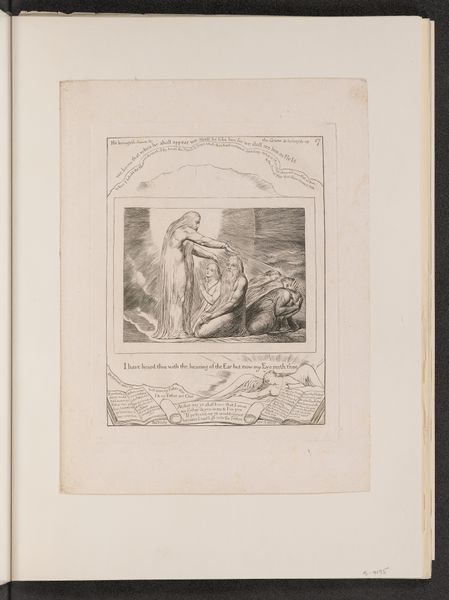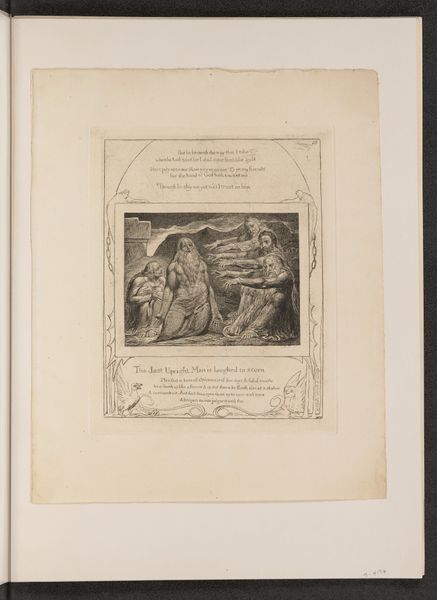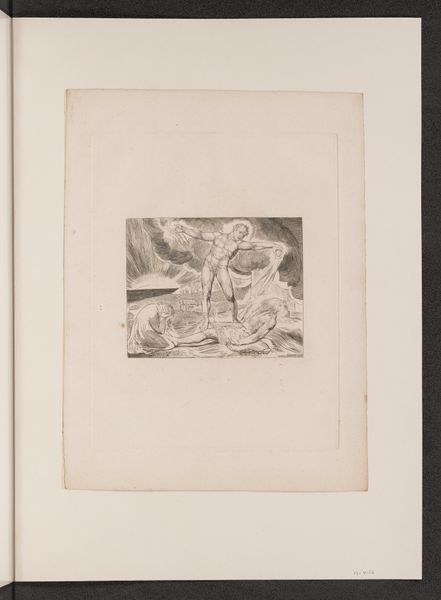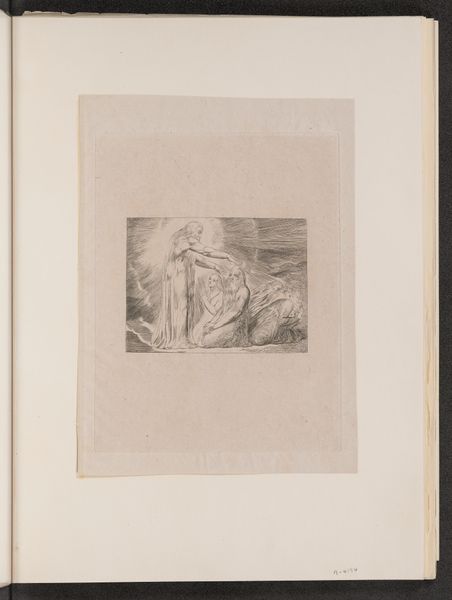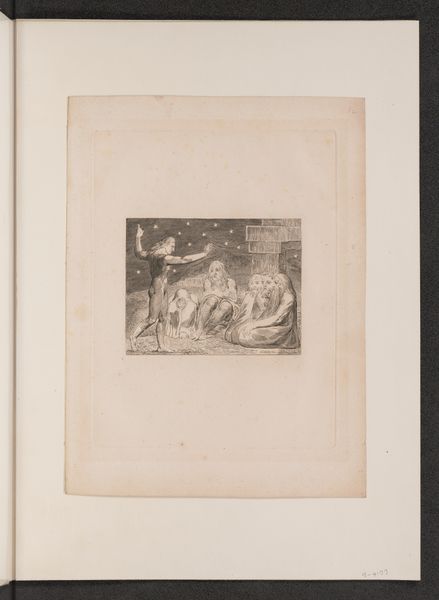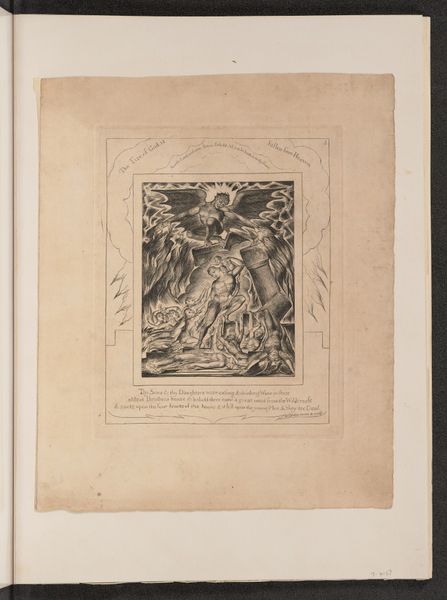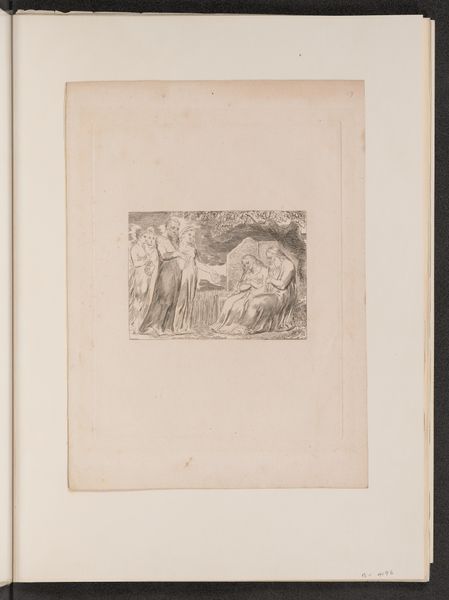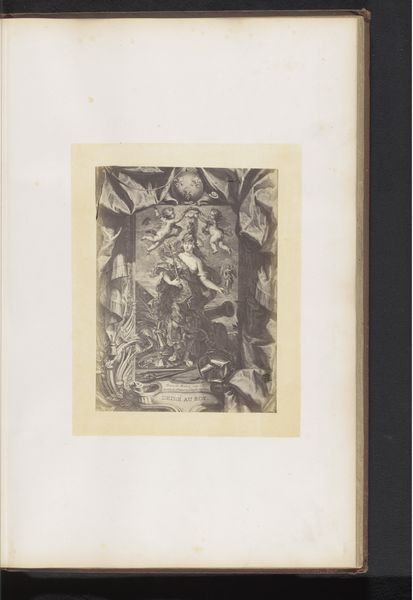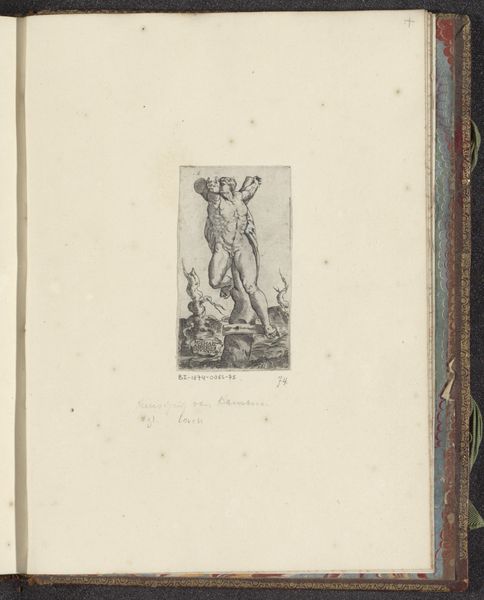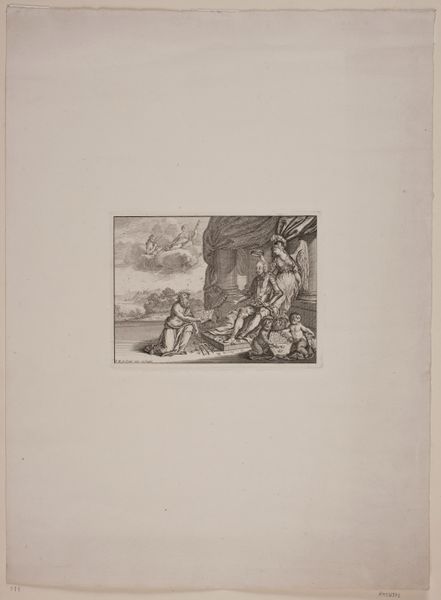
drawing, print, ink, engraving
#
drawing
#
ink drawing
#
allegory
#
narrative-art
# print
#
figuration
#
ink
#
romanticism
#
history-painting
#
engraving
Copyright: National Gallery of Art: CC0 1.0
Editor: Here we have William Blake's 1825 ink drawing, "Satan Smiting Job with Boils," an engraving on paper. It's striking how vulnerable Job appears, contrasted with Satan’s active, almost theatrical pose. How do you interpret this work within its broader context? Curator: Blake's reimagining of the Book of Job is a powerful indictment of institutional power. Job’s suffering, inflicted seemingly arbitrarily, speaks volumes about societal structures that perpetuate injustice. Notice how Blake renders Satan, not as a purely evil entity, but as an agent carrying out a divine order. This forces us to confront uncomfortable questions about power dynamics – who holds it, who is subjected to it, and what ideologies justify its use? Editor: So, it's not just a literal interpretation of the biblical story? Curator: Precisely. Blake uses the narrative to critique the oppressive forces of his time – the monarchy, the church, societal norms. Think about the Romantic era, its focus on individual experience, and rebellion against Enlightenment rationalism. Blake amplifies Job’s plight, transforming him into a symbol of resistance against the rigid dogma that suffocates individual expression. Who are today's Jobs, afflicted by systemic injustice? How do we respond? Editor: It's fascinating how Blake turns a religious scene into a commentary on social and political issues. I hadn’t considered the piece as such a direct indictment. Curator: Blake constantly challenged established orders, inviting us to question the very foundations upon which power rests. Considering this piece, one question we could ask is: What kind of dialogue does art create around challenging power, authority, and religious doctrine? Editor: Seeing it through that lens really changes the artwork. It gives new depth to what felt like a simply dark scene at first. Curator: It is by linking art to culture, history, and lived experiences, and allowing for various perspectives, that artworks come to life, offering important insight.
Comments
No comments
Be the first to comment and join the conversation on the ultimate creative platform.

